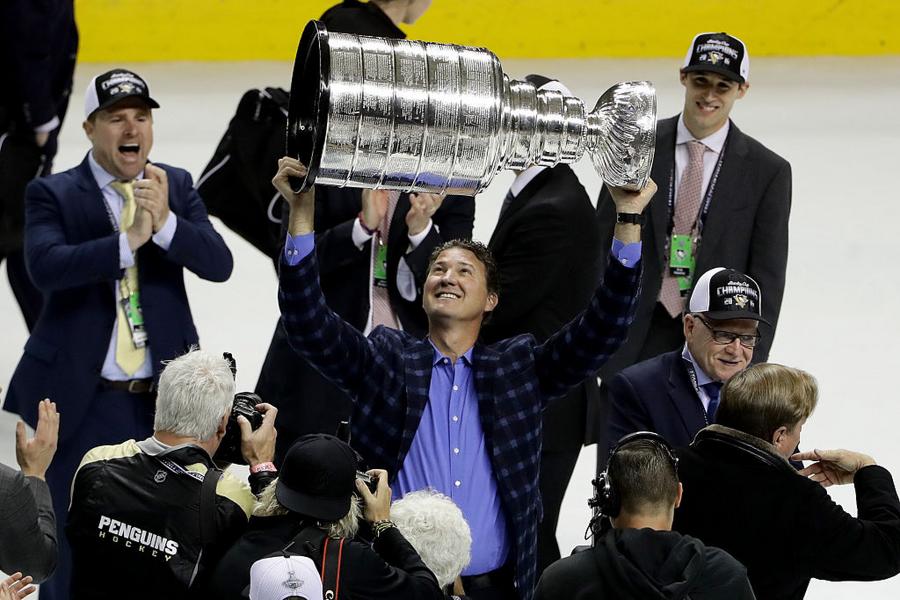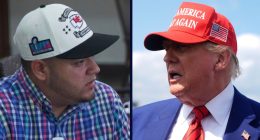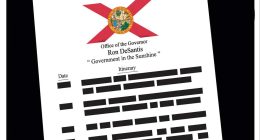I am not a hockey fan or generally a fan of live events. However, I have been to several Pittsburgh Penguins games because I have family in the area, and they periodically get incredible tickets. Watching a professional hockey game is SO MUCH FUN. Hockey is hands down the best in-person professional sport to watch live. In a single game a few years back, I saw two fights, drank three beers, and threw my hat on the ice with a thousand other fans after Sidney Crosby pulled off a hat-trick. It was amazing.
As you may know, the most famous Pittsburgh Penguin player of all time is Mario Lemieux. And sure, Mario’s professional stats – which include two consecutive Stanley Cups (1991 and 1992) – are impressive. But to me, the editor of CelebrityNetWorth, Mario’s greatest accomplishment is the story of how he parlayed a $32 million bankruptcy debt into an ownership stake in the team… A team that eventually sold for $900 million…

(Photo by Ezra Shaw/Getty Images)
An Offer They Couldn’t Refuse
The late 1990s were an extremely tough period for the Pittsburgh Penguins. Throughout the early 1990s, the team spent way beyond its means. By 1998, the team’s owners, Howard Baldwin and Morris Belzberg, had racked up $90 million in debt to a variety of creditors. In November of 1998, the team was forced to declare bankruptcy. Mario Lemieux was the team’s biggest creditor.
As it turned out, during his playing days, Mario had been deferring millions of dollars from his contracts to be paid in retirement, Bobby Bonilla-style. At the time of the bankruptcy filing, the Penguins owed Mario…
$32.5 million
Mario knew that forcing the team to honor that debt was likely a losing proposition for two main reasons: #1) First, the team might be able to skate from the debt entirely through the bankruptcy filing. #2) And secondly, seeking full payment would force a team sale to new owners, and that would likely mean moving to another city. Mario couldn’t let that happen.
So Mario went to trustees overseeing the team’s bankruptcy with an offer. Mario offered to convert $20 million of the debt into team equity, PLUS he asked for $5 million in cash for operating expenses. He offered to put together a new team of investors to buy out the entire franchise, and he promised to keep the team in Pittsburgh.
The United States bankruptcy court agreed to the terms, and the NHL gave its stamp of approval in September 1999.
Next, Mario went out and got a group of investors led billionaire Ron Burkle who chip in $20 million, to buy the Penguins for…
$107 million
A year before the sale, the Penguins were valued at $132 million. So they got a good deal right out of the gate.
In exchange for converting his $20 million deferred salary and putting the deal together, Mario Lemieux came out of the negotiations with a 25% ownership stake in the Penguins. Burkle had 19% and the rest was divvied up between a few dozen different smaller investors.
But Mario didn’t stop there. The team still owed $60 million to various other creditors. Mario and the team could have used the bankruptcy proceeding to negotiate the debts down to pennies on the dollar. Mario insisted the organization pay every penny it owed. Dollar on the dollar. By 2005, all pre-sale debts had been cleared.
Over time, Lemieux’s stake was increased to around 40%, and Burkle’s jumped to 25%.
The year before Mario took over, the Penguins lost $16 million. In his first year as owner, the Penguins posted a $47,000 profit. Late in his ownership period, the team earned over $160 million per year in revenue. Oh, and under Mario’s leadership, the team won three more Stanley Cups: 2009, 2016, and 2017.
In late 2021, Fenway Sports Group LLC (the company that owns the Boston Red Sox and Liverpool F.C) agreed to buy a majority ownership stake in the Penguins at a valuation of…
$900 million
At that valuation level, Mario’s 40% stake was worth around $360 million on paper, but it’s not quite as clear-cut as that. Mario and Ron Burkle only sold a portion of their stakes. They both remain minority owners of the team. Either way, Mario almost certainly received at least $200 million in cash on that transaction. Perhaps as much as $300 million. Pre-tax, of course. And if his remaining stake is ever acquired, he’ll have yet another windfall. All from forgiving a $20 million debt twenty years earlier.
Oh, and before you go, Mario isn’t the only professional athlete who thought about converting deferred salary into team ownership in the late 1990s. Back in 1998, NFL quarterback John Elway was given the option to convert $21 million in deferred salary plus $15 million in cash into a 20% stake in the Denver Broncos. At the time, the Broncos were valued at $180 million.
John Elway declined.
In August 2022, the Broncos were sold to Walmart heir Rob Walton for $4.65 billion. So, at that acquisition, John Elway’s 25% stake could have been worth $930 million. To make matters worse, he took the $15 million and ended up losing about half the value in a Ponzi scheme.




